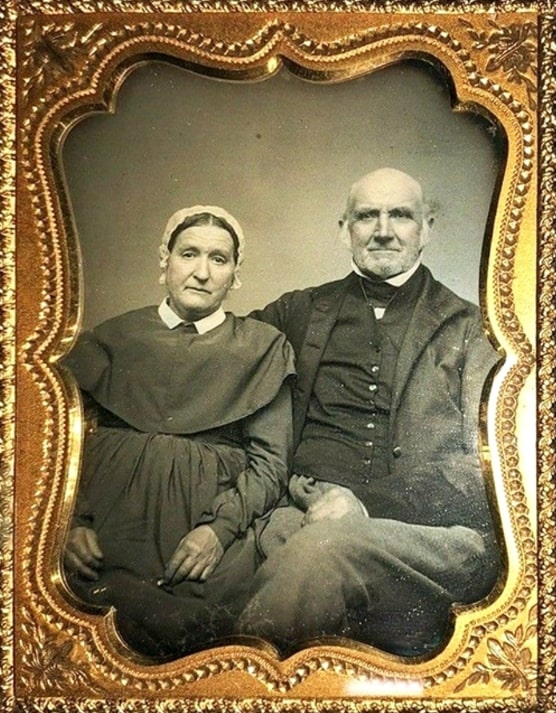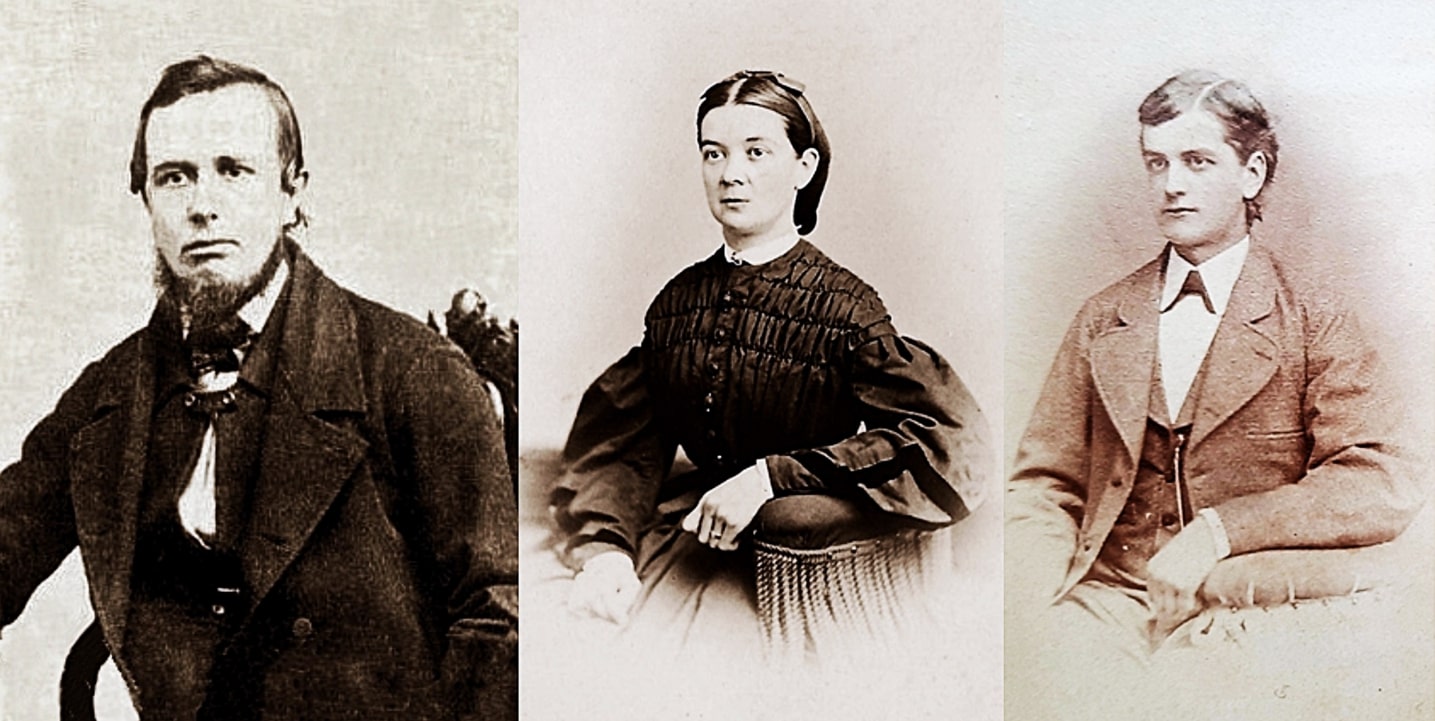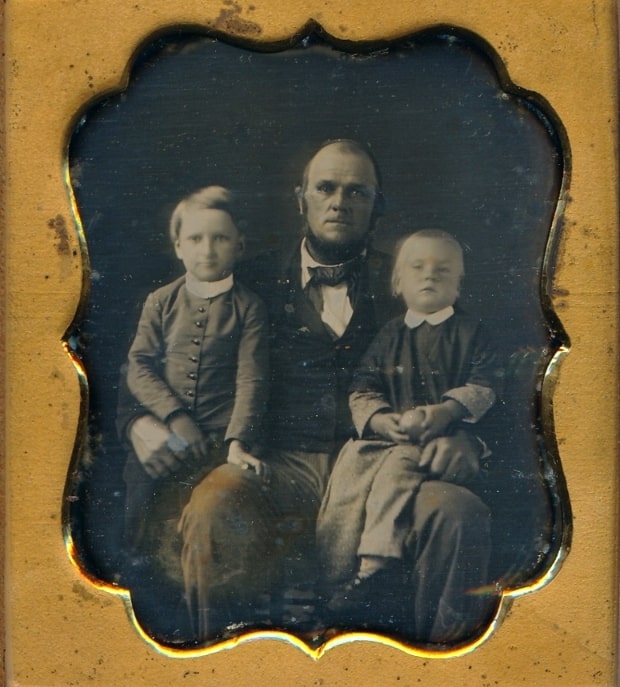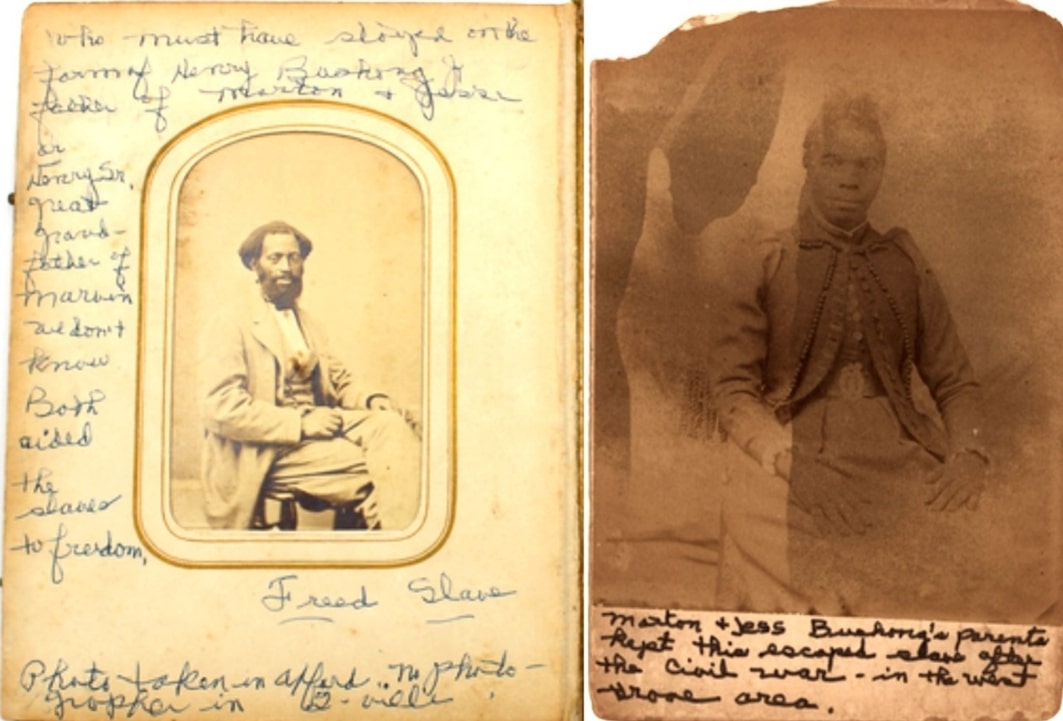Introduction: In this article, Melissa Davenport Berry writes more about some of the prominent abolitionist families who for many years acted as “conductors” on the Underground Railroad in Lancaster County, Pennsylvania. Melissa is a genealogist who has a website, americana-archives.com, and a Facebook group, New England Family Genealogy and History.
Today I continue my story of the Rakestraw-Bushong family in Lancaster County, Pennsylvania, who were Quakers and abolitionists – and credited with manning Lancaster’s “Columbia to Christiana” branch of the Underground Railroad from their homes in and around Bart Township.

My finds in GenealogyBank’s Historical Newspaper Archives really assisted me with my research, along with the help of Lancaster County History digital archives and a descendant, Richard B. Bushong, author of The History of the American Bushong Family. Richard runs the Bushong Family Tree United official webpage.
Another treasure trove connected to the family was a large photo card album entitled “Freed Slaves & Abolitionist Family Album” (Lot 0323), which sold for $19,680 at Fleischer’s Auctions’ “Civil War & African American History Collection” on 5 August 2023.
This album contains photo cards that date to the Civil War era with original photographs of two freed slaves as well as photographs of various members of the Henry Bushong family.
According to its provenance, this photo album was originally presented to Dr. Charles Henry Bushong (1855-1913) by his grandfather Henry Bushong (1783-1870), who fathered many children with his first wife Sarah Gilbert (1787-1831), daughter of Jesse and Sarah (Harding) Gilbert. He had one additional son, Gilbert Bushong (1836-1911), with his second wife Esther Valentine (1799-1867), daughter of John and Mary (Taylor) Valentine.

Charles Henry Bushong was born to Gilbert and Edith Kinsey (Paxson) Bushong. Gilbert is the son of Henry and Esther (Valentine) Bushong. Edith is the daughter of Elwood H. and Elizabeth Moore (White) Paxson.

What I found on Charles Henry Bushong was very interesting; perhaps the most significant discovery was his role in the formation of a spiritual organization in 1900. It was a branch of the Hicksite sect, founded by Elias Hicks of Long Island in 1828.
One of the six members to join Bushong’s new sect was Robert Clemens Smedley, author of the “History of the Underground Railroad in Chester and the Neighboring Counties of Pennsylvania,” which includes the Bushong’s role.

This article reports:
A Quaker or Friends’ church of the Hicksite branch was organized yesterday in the office of Dr. Charles H. Bushong, 1427 Stout Street, and another denomination to the many that are established in Denver has been added. The church starts with only six members, and in respect of numbers is probably as small as any church in the country. The members are:
Dr. C. H. Bushong, New York; John C. Carpenter and wife, Ohio; John T. Plummer and wife, Illinois; William Malone and mother, Indiana; Miss Ellen Price, Philadelphia; Professor Robert C. Smedley (School of Medicine, Denver University), Blackburn, Philadelphia.
To recap: My last story covered a few members of the Bushong family, including Quaker and abolitionist author Abraham Rakestraw and his wife Lydia (Bushong) Rakestraw, daughter of Henry Bushong and his first wife Sarah (Gilbert) Bushong. (See: Part 1)
In addition, I introduced Jacob Bushong (1813-1880), a son born to Henry and Sarah who played a major role in aiding the underground railroad. He married Margaret Hobson (1818-1902).

Below is another photo of Jacob Bushong with his son, Edwin Bushong, and his nephew, Emmor B. Morrison, the son of his sister Caroline and her husband, Joseph P. Morrison.

Jacob Bushong had taken in William Wallace, an enslaved man who escaped and came to Bart Township in Lancaster County, and found work with Jacob in 1835.
The full story of Jacob and William can be found in the article “The Underground Railroad,” authored by Marianna Gibbons Brubaker in the Journal of the Lancaster County Historical Society, Volume 15, number 4, in 1911.
Jacob and William were working in the barn one day when a party of slave holders showed up. They took William’s wife and their two children, also the wife of another man who had escaped at the same time with Wallace, and held them in the Lancaster jail.
Daniel Gibbons helped them to escape. His father Joseph Gibbons along with Thomas Peart brought them to the next station on the Underground Railroad and they went on to freedom.
Two other freed men whom the Bushong family helped were Green Staunton and Moses Johnson. Both men had been sold to go far South, and, having been lodged temporarily at the jail at Frederick, Maryland, broke out. They found their way to Daniel Gibbons.
In 1835 Staunton came to live with Jacob Bushong and slaveholders found him two years later. They bound and gagged Staunton and took him to the Lancaster jail.
Henry and Jacob Bushong decided to buy Staunton from his captors. They paid $675 and Staunton was liberated and departed for Canada.
The other man, Moses Johnson, was also bought, for $400. He purchased a small farm and good buildings.
The two photos below from the “Freed Slaves & Abolitionist Family Album” are not identified but are labeled as follows.
First photo: “[Freed slave] stayed on the farm of Henry Bushong.” This may be a photo of Green Staunton or Moses Johnson.
The second photo features a seated woman and marked to a photographer in Port Deposit, Missouri. An ink notation on the mount below the photo reads: “Bushong’s parents kept this escaped slave after the Civil War – in the West Grove area.”

Explore over 330 years of newspapers and historical records in GenealogyBank. Discover your family story! Start a 7-Day Free Trial
Note on the header image: Harriet Tubman was the most famous conductor of the Unground Railroad who worked with Quaker abolitionists in Pennsylvania. Abolitionist William Lloyd Garrison called her “Moses.” Photo: traveling exhibition for Harriet Tubman, “The Journey to Freedom,” on exhibit at Philadelphia City Hall, Pennsylvania. Credit: Wofford Sculpture Studio, LLC.
Related Articles:

Hello Melissa,
I enjoyed parts 1 and 2 of your articles about the Lancaster County abolitionists. Thank you, they are nicely written. The Lancaster abolitionists deserve so much credit for helping and rescuing the many desperate runaways. In my book, which you mentioned, I’ve written a chapter dedicated to the Lancaster Bushongs and relating some of their experiences helping so many to escape enslavement.
Also, thank you for crediting my website, Bushong United, for some photos. I wanted to let you know, its web address has since changed to Bushongunited.com
I also thought you’d find it interesting that I believe I’ve been able to identify the photo of the black woman in your article. At the bottom of her photo, it says that she was kept [sic] by Morton and Jess’s parents after the war. Their parents were Henry Bushong and Irene Paxson. In the 1870 Census for Henry and Irene’s household, there is a black servant named Indianna Gibbons. So I believe this is who the inscription refers to. Interestingly, Indianna can be found in the 1850 Census with her family, including her parents, James and Hannah Gibbons. I have added them, Indianna, and the rest of the family to the FamilySearch tree and uploaded her photo so that descendants who may want to can find them.
Thank you for the interesting and informative intel and I enjoyed researching this family. I was asked to research a furniture piece that was in a private collection. It belonged to this family and the collector was very excited to learn of its provenance. And I appreciate your generous and gracious manners to allow me to use the website and photos. I will let my Quaker Genealogy Group aware of the new site link as well.